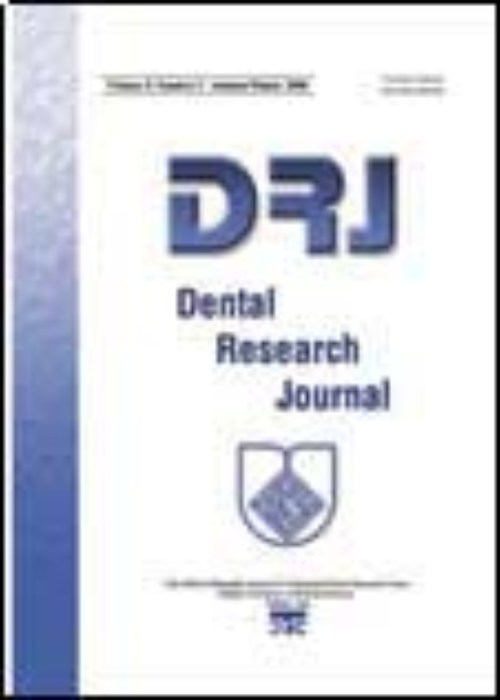Effect of surface treatment with laser on repair bond strength of composite resin to ceramic
Small chipping or fracture of ceramic restorations may be repaired by composite resin instead of replacing the restoration. This method is faster and cheaper compared to restoration replacement. Several strategies have been suggested to obtain a high repair shear bond strength (SBS). This study aimed to assess the efficacy of some new ceramic surface treatments (laser and universal adhesive) to enhance the repair bond strength of composite resin to ceramic compared to the conventional method.
This in vitro study evaluated 80 IPS Empress Esthetic ceramic plates in eight groups (n = 10). The ceramic surface was polished with 320‑grit silicon carbide paper under running water, rinsed with water spray for 10 s and dried. The samples were then divided into two subgroups for mechanical surface preparation with hydrofluoric (HF) acid and Er:YAG laser (2 W, 200 m J, 10 Hz, 10 s). Each group was divided into two subgroups for use/no use of silane. The conventional or universal adhesive was then applied on the samples in each subgroup. Composite cylinders were bonded to the ceramic surface using plastic tubes. The samples were stored in distilled water at 37°C for 24 h and subjected to an SBS test. Data were analyzed using one‑way ANOVA (P < 0.05).
The interaction effect of variables on SBS was significant. Maximum SBS was noted in HF acid + silane + conventional adhesive group (mean: 12.0481 MPa). Minimum SBS was noted in the laser + conventional adhesive group (mean: 2.5766 MPa). Surface treatment with HF acid yielded significantly higher SBS than laser (P < 0.001). The interaction effect of conventional/universal adhesive and use/no use of silane on SBS was statistically significant.
The repair SBS was higher in groups treated with HF acid compared to laser. Ceramic surface treatment with HF plus silane plus conventional adhesive yielded a higher SBS as well as HF plus Universal adhesive. Thus, the application of silane as a separate step can be omitted in the repair of ceramic restorations with universal adhesives.
- حق عضویت دریافتی صرف حمایت از نشریات عضو و نگهداری، تکمیل و توسعه مگیران میشود.
- پرداخت حق اشتراک و دانلود مقالات اجازه بازنشر آن در سایر رسانههای چاپی و دیجیتال را به کاربر نمیدهد.



